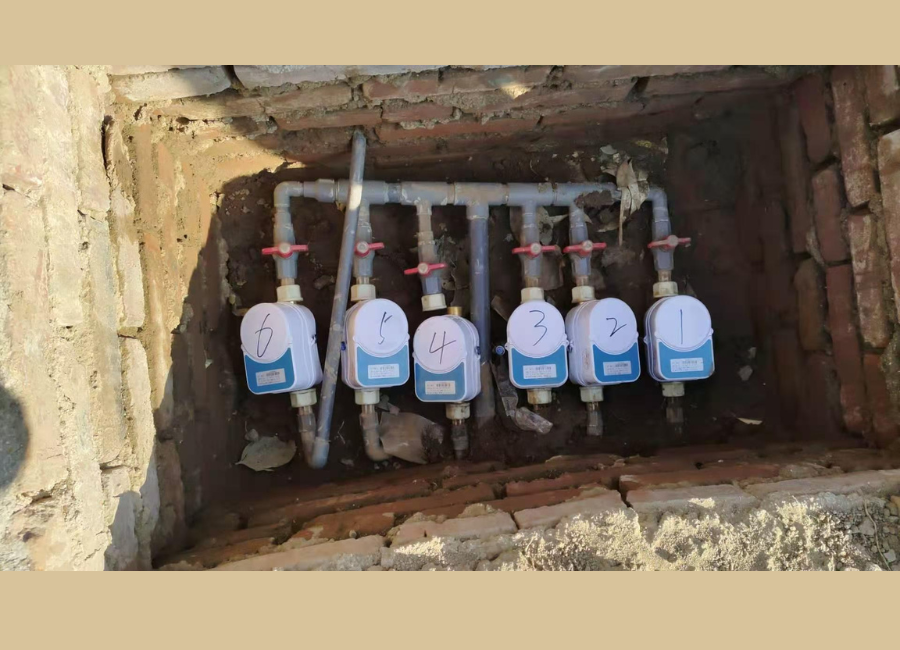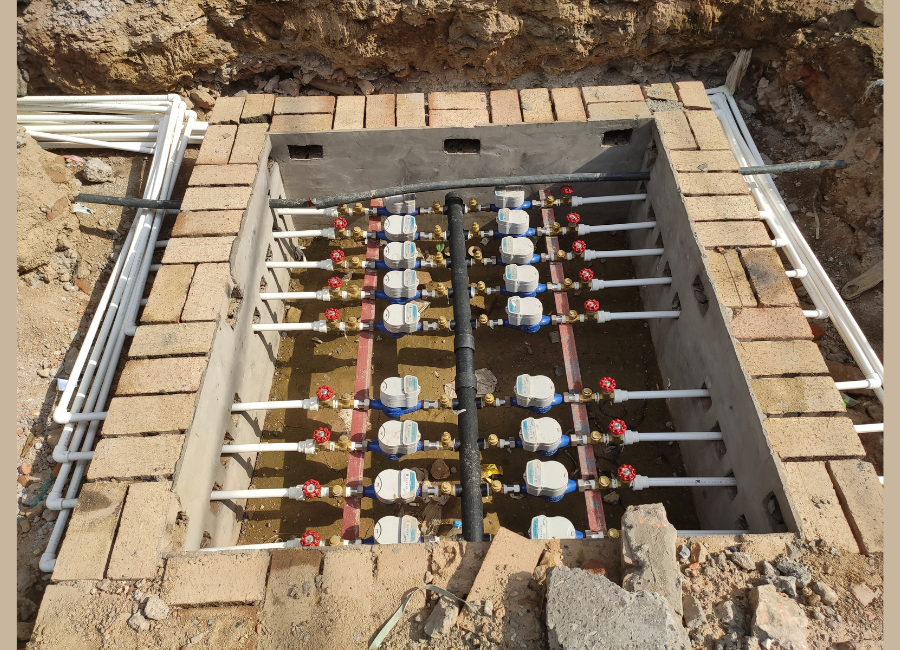Choosing the Right Location and Pipe Diameter
Selecting the appropriate location and ensuring the correct pipe diameter are crucial for smart water meter installation.
- Match the Flow Rate: The pipe diameter determines the optimal operating flow rate range of the water meter. If the diameter is too large, the meter may not accurately measure low flow rates, leading to significant measurement errors. Conversely, if the diameter is too small, the meter may be overloaded during high flow rates, affecting measurement accuracy and potentially damaging the meter.
- Avoid Excessive Pressure Loss: An inappropriate pipe diameter can cause excessive or insufficient pressure loss within the pipeline, impacting the meter’s measurement performance.
- Reduce Wear and Tear: A suitable pipe diameter ensures a stable water flow, reducing wear and tear on the internal components of the smart water meter and extending its service life.
Ease of Reading and Accessibility
The meter should be installed horizontally, with the display facing upwards. Pay attention to the flow direction and the arrow indication on the smart water meter’s casing during installation. Prolonged reverse installation can lead to accumulated measurement errors, inaccurate water bill calculations, and potential financial loss for users.
Avoiding Harsh Environments
Smart water meters should not be installed in submerged or heavily polluted environments. Prolonged submersion of the electronic components can lead to moisture ingress once the water level drops, causing short circuits, malfunction, or even complete failure of the meter. These smart water meters typically use sensors to measure water flow meter. If installed in a heavily polluted environment, such as one with high levels of dust or sediment in the air, these contaminants may clog the sensor, affecting measurement accuracy and potentially rendering the meter inoperative.

Installing Valves and Straight Pipe Sections
Valves should be installed both upstream and downstream of the smart water meter to control the water flow. Both valves should be open during normal operation. The upstream valve should be closed when the smart water meter requires maintenance (e.g., pipe flushing, venting, or repair), replacement, or calibration. This cuts off the water supply, preventing interference with maintenance work and avoiding water waste. The downstream valve is installed to prevent backflow due to unstable pressure within the pipeline network, which can cause the meter to run backward.
In addition to valves, straight pipe sections should be installed both upstream and downstream. These straight pipe sections are essential: they help to stabilize the flow, gradually smoothing out the water flow and reducing turbulence. They also provide a stable velocity field for the smart water meter, ensuring measurement accuracy. There are also requirements for the length of the straight pipe sections, to facilitate meter installation, disassembly, and future maintenance.
Preventing Unauthorized Water Usage
Another factor to consider during smart water meter installation is preventing unauthorized water usage. To mitigate this, water utilities or public service entities are advised to install smart water meters at a distance of 10-20 meters or further from the user and use PE pipes for water conveyance. This significantly reduces economic losses due to unauthorized water usage.
As your trusted water meter supplier, Tengyue Metering is committed to providing you with high-quality products and professional services. If you encounter any issues during installation or usage, please feel free to contact us!

